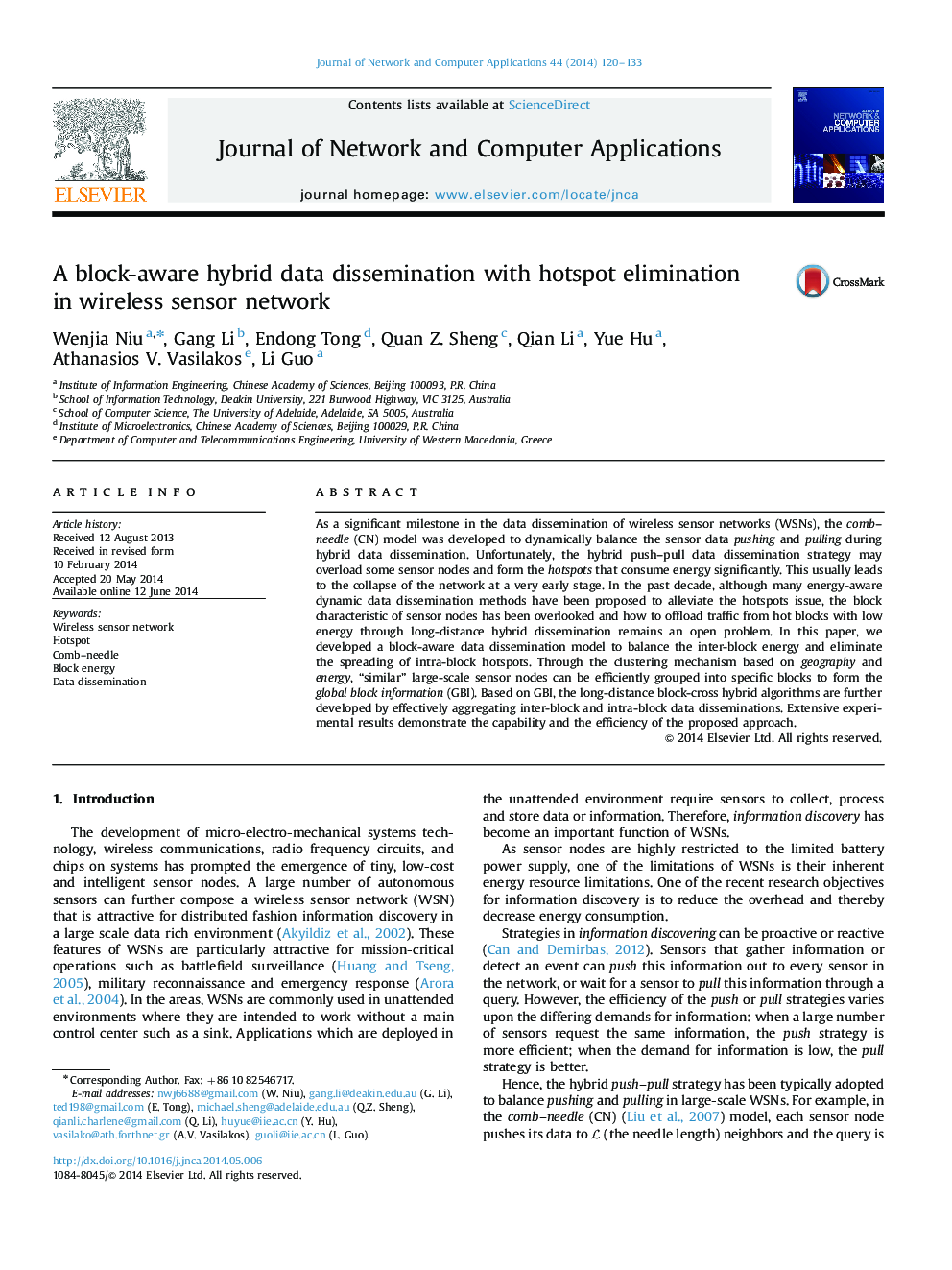| Article ID | Journal | Published Year | Pages | File Type |
|---|---|---|---|---|
| 457197 | Journal of Network and Computer Applications | 2014 | 14 Pages |
As a significant milestone in the data dissemination of wireless sensor networks (WSNs), the comb–needle (CN) model was developed to dynamically balance the sensor data pushing and pulling during hybrid data dissemination. Unfortunately, the hybrid push–pull data dissemination strategy may overload some sensor nodes and form the hotspots that consume energy significantly. This usually leads to the collapse of the network at a very early stage. In the past decade, although many energy-aware dynamic data dissemination methods have been proposed to alleviate the hotspots issue, the block characteristic of sensor nodes has been overlooked and how to offload traffic from hot blocks with low energy through long-distance hybrid dissemination remains an open problem. In this paper, we developed a block-aware data dissemination model to balance the inter-block energy and eliminate the spreading of intra-block hotspots. Through the clustering mechanism based on geography and energy, “similar” large-scale sensor nodes can be efficiently grouped into specific blocks to form the global block information (GBI). Based on GBI, the long-distance block-cross hybrid algorithms are further developed by effectively aggregating inter-block and intra-block data disseminations. Extensive experimental results demonstrate the capability and the efficiency of the proposed approach.
